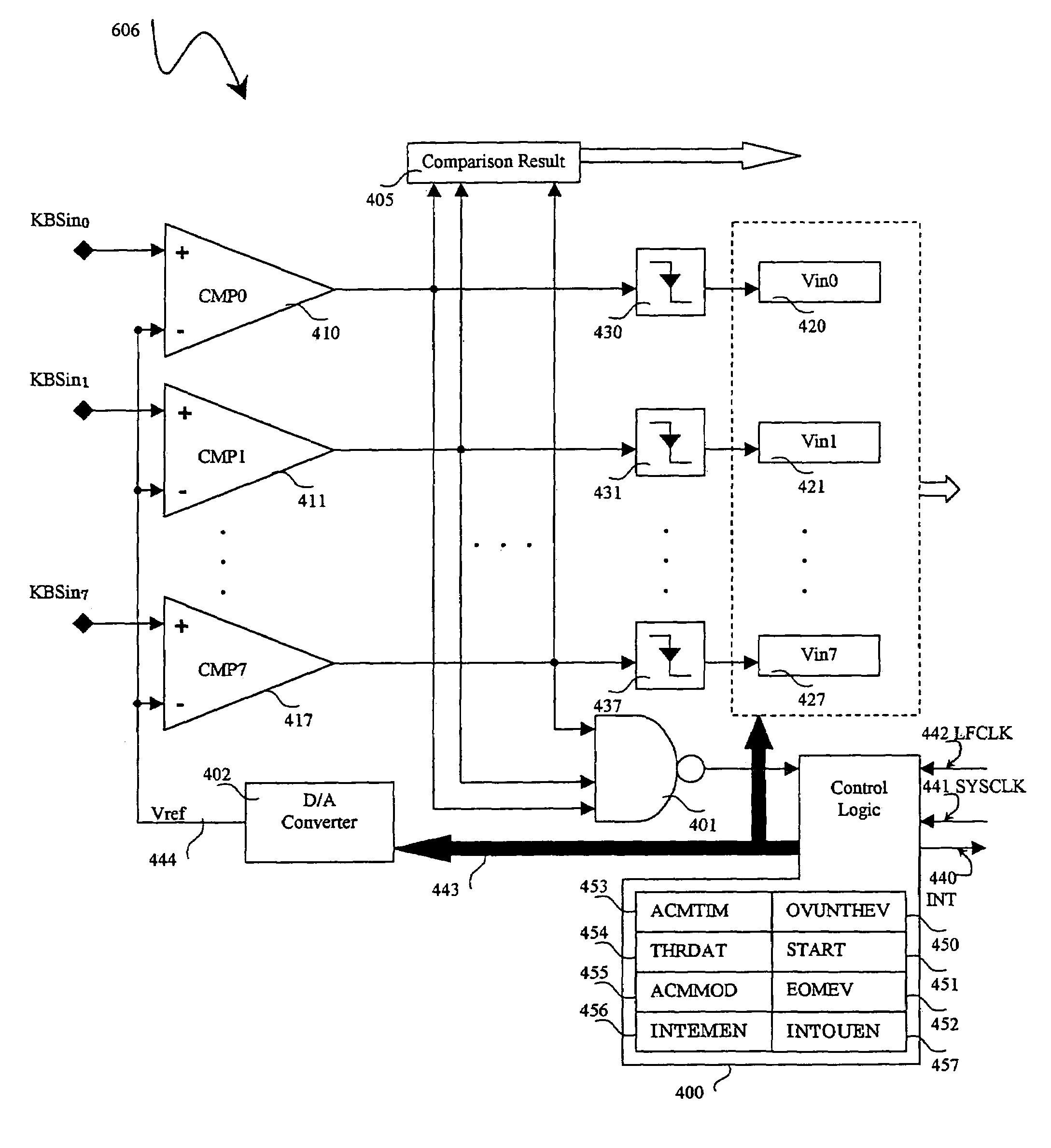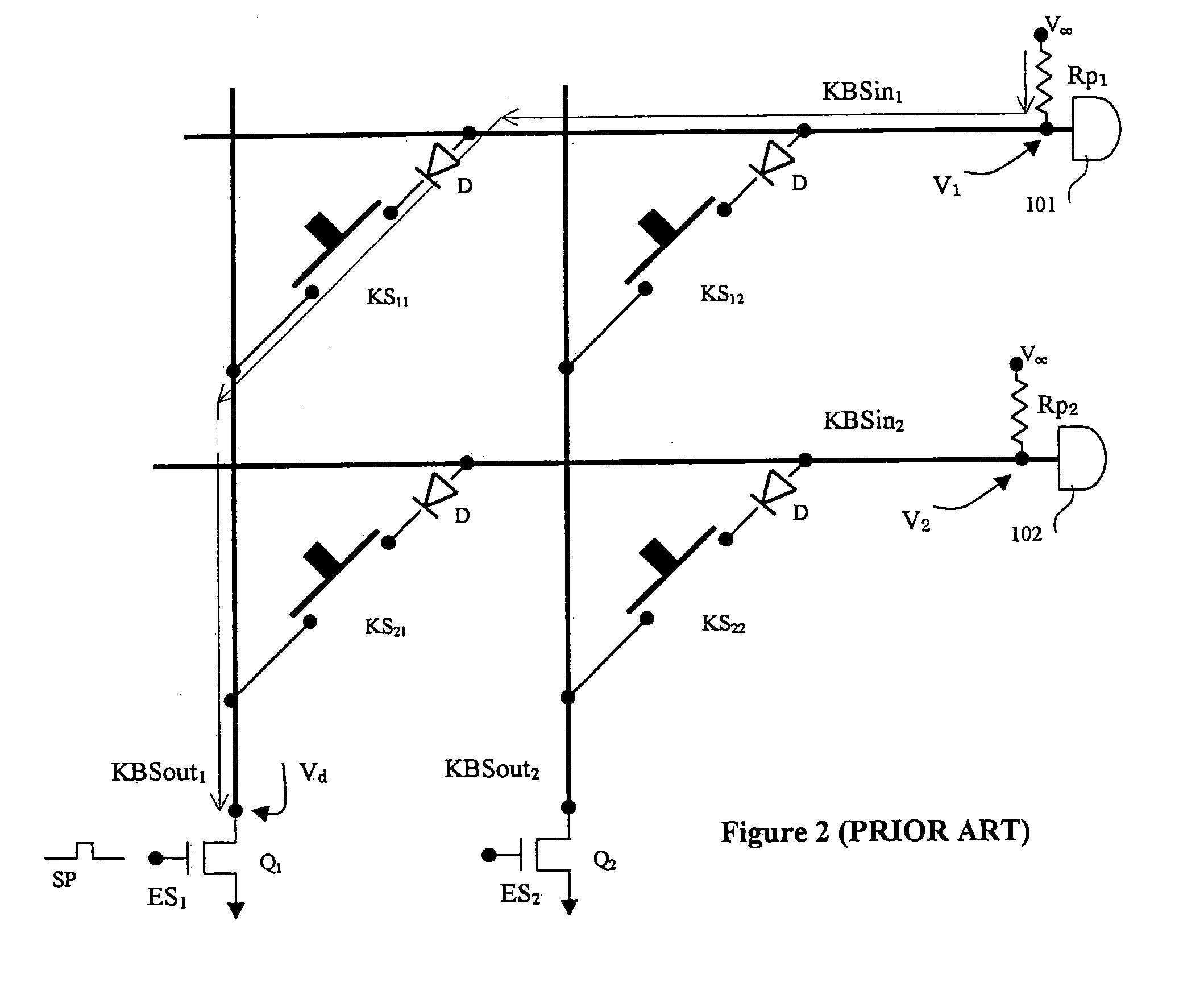A/D converter with comparators and low-power detection mode for resistive matrix keyboards
a resistive matrix keyboard and converter technology, applied in the direction of pulse technique, device coding details, coding, etc., can solve the problems of low power, false indication of pressed keys, and expensive keyboard assembly, and achieve the effect of low power
- Summary
- Abstract
- Description
- Claims
- Application Information
AI Technical Summary
Benefits of technology
Problems solved by technology
Method used
Image
Examples
Embodiment Construction
[0046]A resistive matrix keyboard device generates analog signals that correspond to the depression of keyboard keys. To determine which key is pressed (or which keys are pressed), the matrix is systematically scanned by applying a Scan Pulse (SP) to one of the drive lines and monitoring the sense lines signal levels. In the prior art implementation illustrated in FIG. 3, the sense lines are monitored by CMPs with a reference threshold voltage Vref that is fed into each CMP.
[0047]In FIG. 3, V1 is the input voltage level of CMP1 presented by KBSin1, and V2 is the input voltage level of CMP2 presented by KBSin2. The voltage Vd is the voltage drop over a closed drive line ES. Each CMP output is determined by the comparison result between its corresponding inputs: if the positive input level (marked with a “+” sign) is greater than the negative input level (marked with a “−” sign), then the CMP output set to “1”, otherwise it is reset to “0”. For instance, if the voltage level V1 of row...
PUM
 Login to View More
Login to View More Abstract
Description
Claims
Application Information
 Login to View More
Login to View More - R&D
- Intellectual Property
- Life Sciences
- Materials
- Tech Scout
- Unparalleled Data Quality
- Higher Quality Content
- 60% Fewer Hallucinations
Browse by: Latest US Patents, China's latest patents, Technical Efficacy Thesaurus, Application Domain, Technology Topic, Popular Technical Reports.
© 2025 PatSnap. All rights reserved.Legal|Privacy policy|Modern Slavery Act Transparency Statement|Sitemap|About US| Contact US: help@patsnap.com



